Info︎
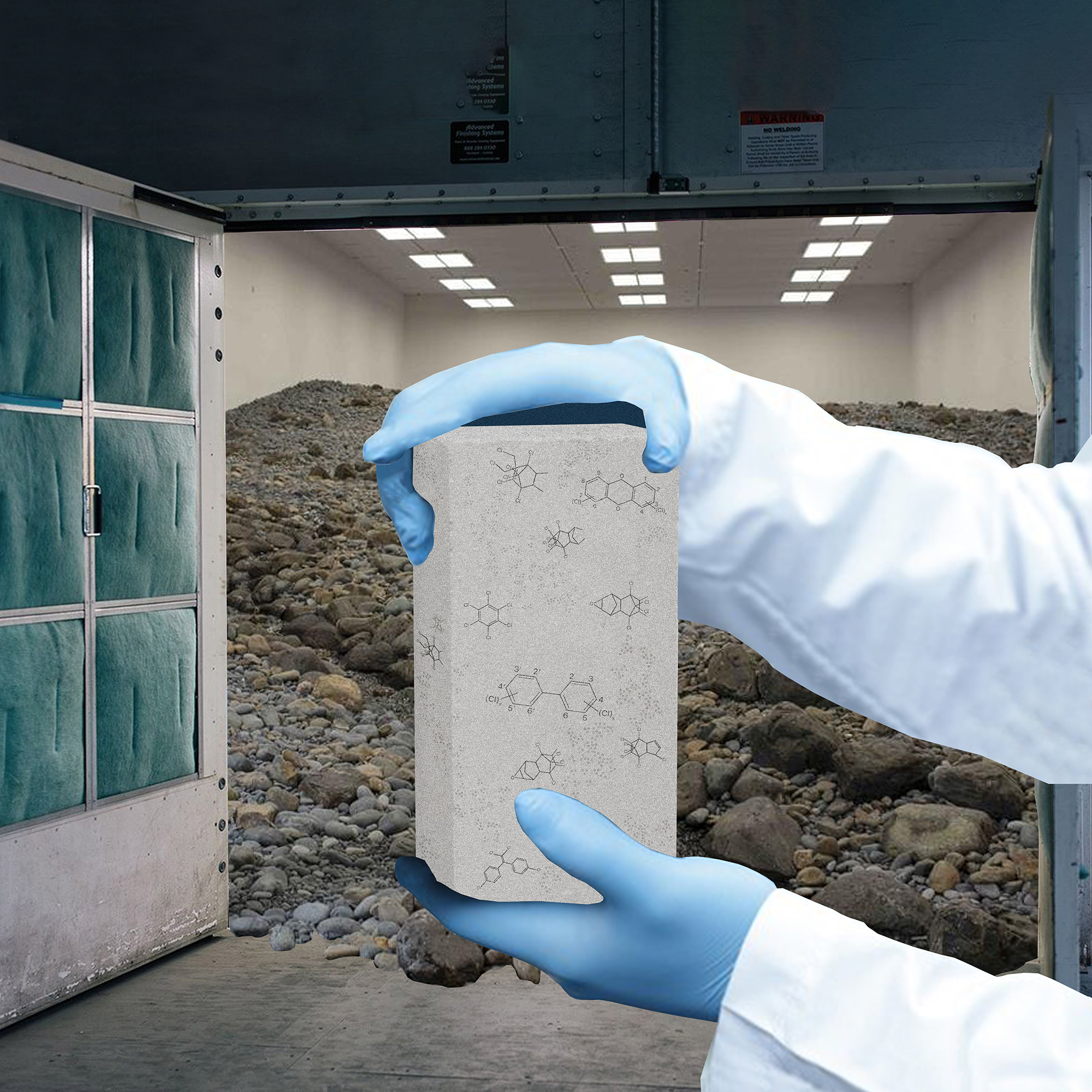
Materializing Arctic Air
Sanirajak, NunavutFall 2020, Columbia GSAPP
+ 2020 Buell Center Paris Prize Finalist
Collaborator: Audrey Marie Dandenault
Critic: Nahyun Hwang, NHDM
Our proposal studies air-borne pollution in the Arctic and introduces remediation through the conversion of the Distant Early Warning line, abandoned Cold War era military infrastructure, into a detection, monitoring, collection and extraction system targeting chemicals known as Persistent Organic Pollutants (POPs). Characterized by high toxicity levels, exposure causes serious health problems, with the bodies of Arctic people subject to the highest concentrations on Earth. With the majority of emissions occurring below the arctic line, their concentration in the arctic presents an environmental justice crisis.
Twelve uniformly distributed sites, selected due to their proximity to Inuit hamlets, become the active hubs of this network. Each site hosts health, education, training, and community oriented programming, with a unique site-specific research and production emphasis in relation to POPs. Sanirajak, a growing Inuit settlement in Nunavut, becomes a pilot site with an emphasis on material production facilities as a remediation technique to capture POPs found in sediment.
The environment around Sanirajak is characterized by tundra, continuous permafrost, and the Foxe Basin, a major local life-source. Warming waters and the loss of sea ice have altered arctic eco-structures, creating an accumulation of POPs in the sediment of the Foxe Basin exacerbated by melting permafrost. Sediment-based materials are an ideal recipient for waste and its management by incorporation, capturing pollutants without compromising technical properties.
Existing buildings on site are supported by gravel pads 8 feet off-grade, which protect from the freeze/thaw cycle. We propose the recovery of non-essential pads, utilizing the raw material as aggregate in our material production process. By sinking our introduced spaces into the pads, our strategy choreographs snow drifts to increase insulatory capacity, providing a range of spaces sheltered from harsh winds. Environmental constraints and changes establish a new climactic relationship, where weather is negotiated rather than contested.
Construction in the Arctic leads to high embodied energy values as building materials are transported over long distances, and harsh environmental conditions increase daily energy demands. The structure, envelope, and finish is a recycled SIP panel filled on-site, with high insulatory qualities and simple assembly procedures. A passive thermosiphon placed underneath the floor slab extracts heat from the ground and discharges it before reaching the permafrost.
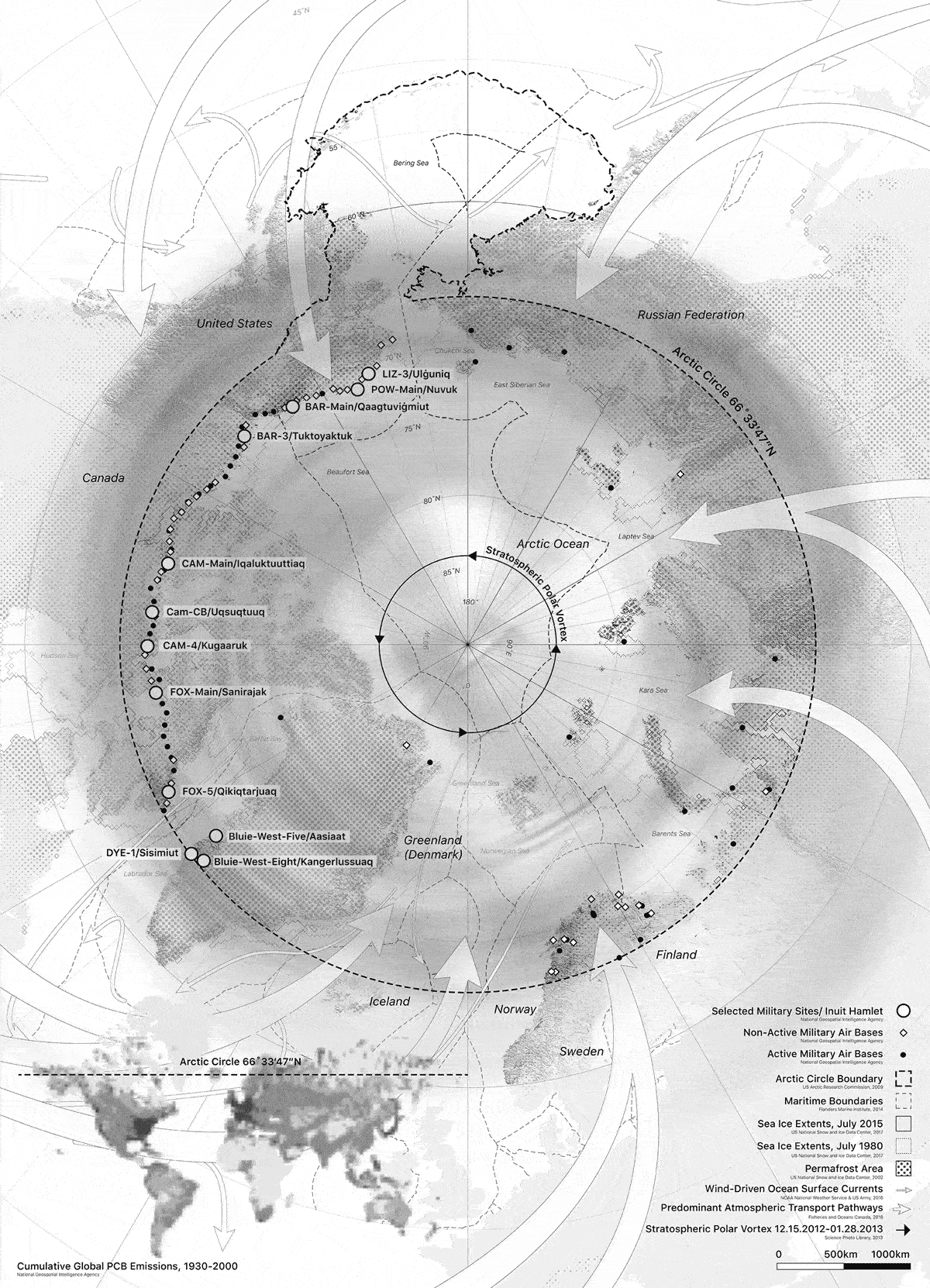

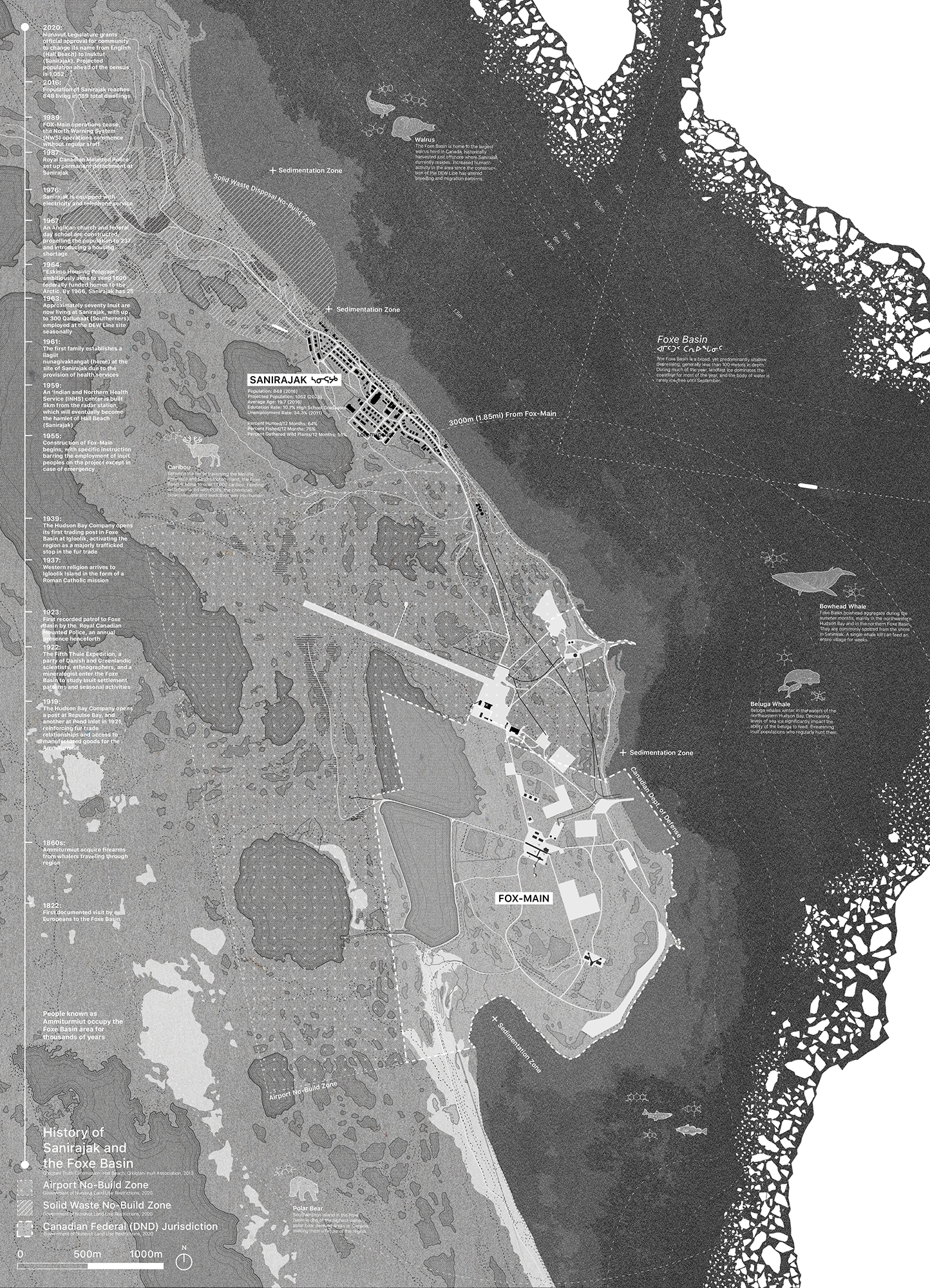
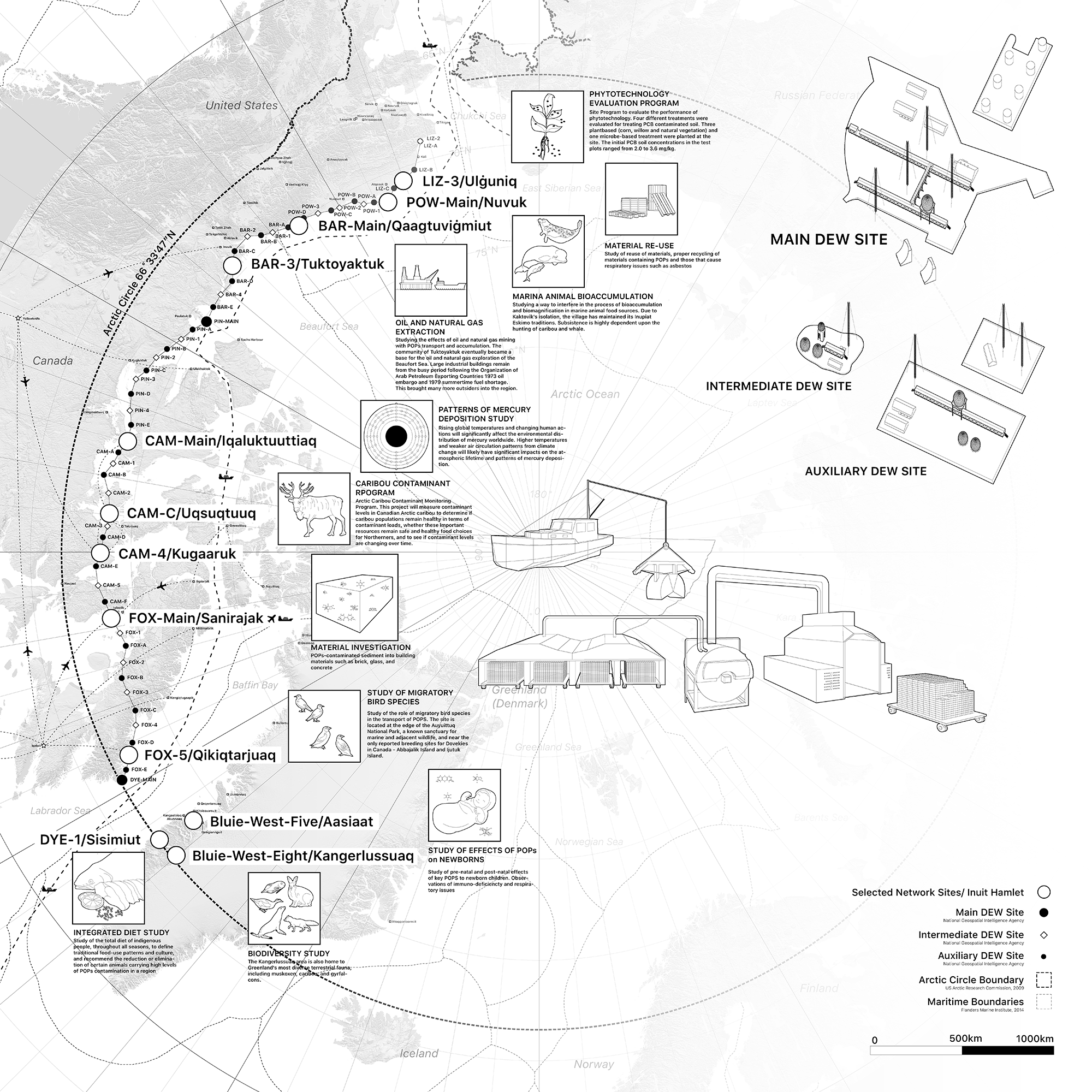

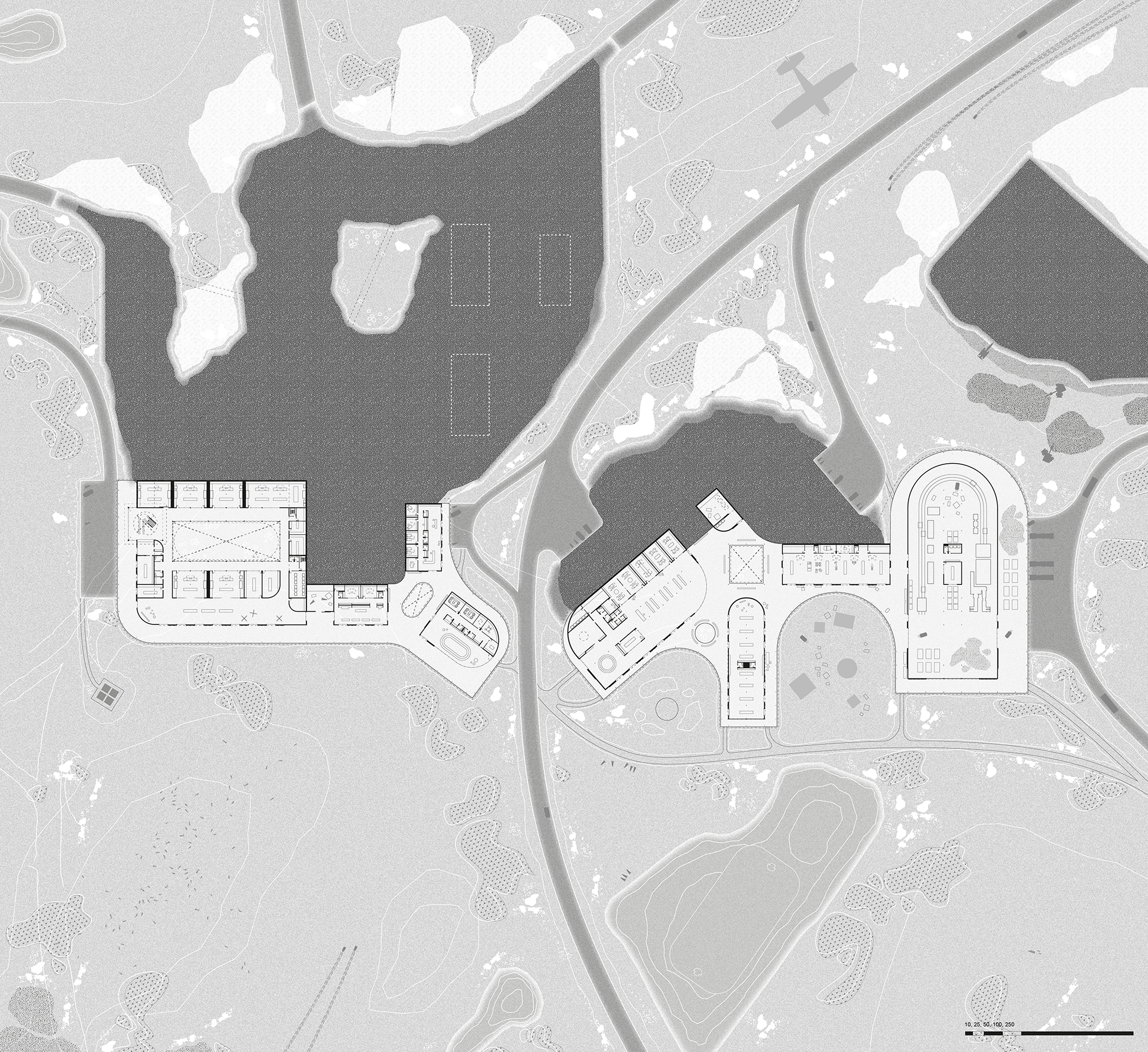



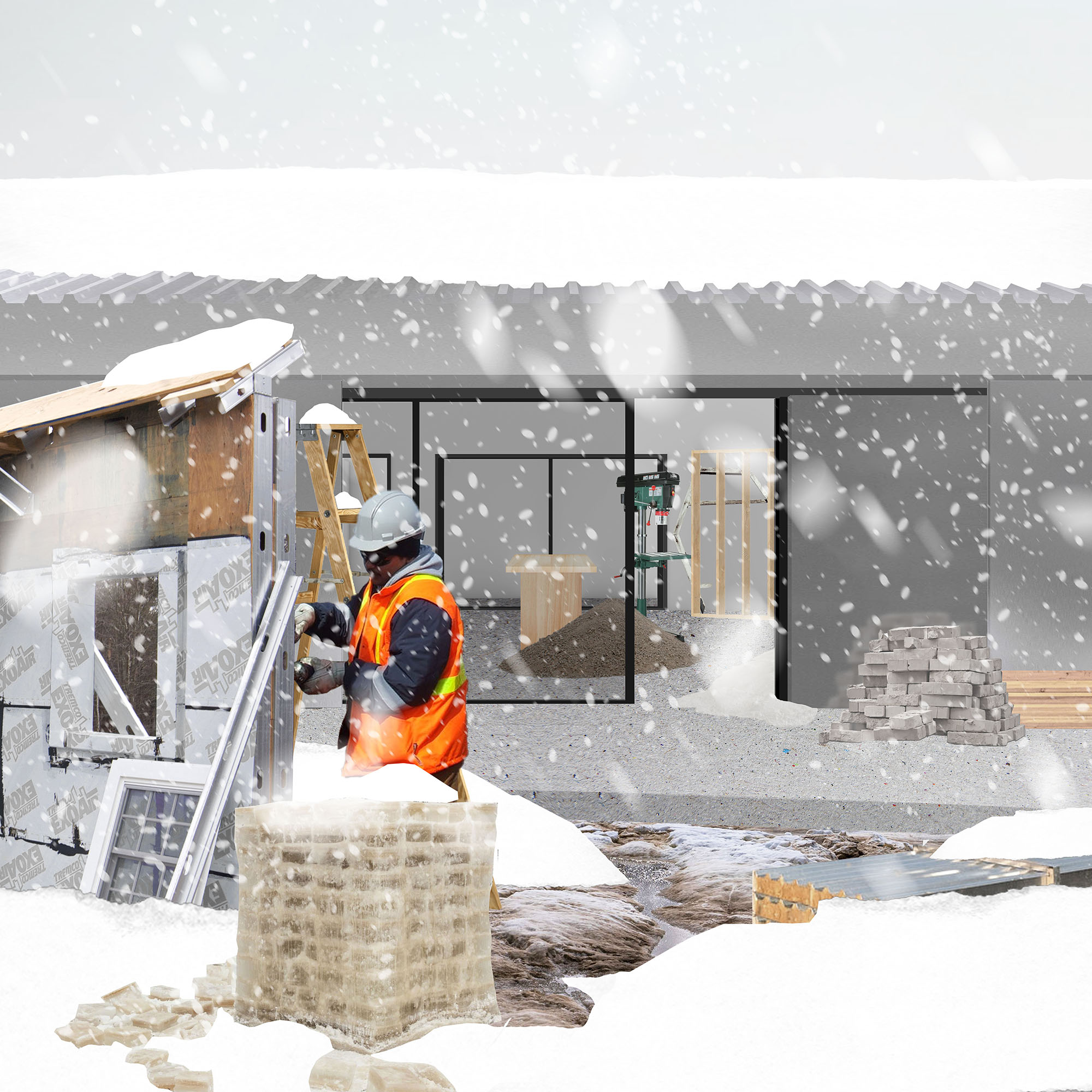


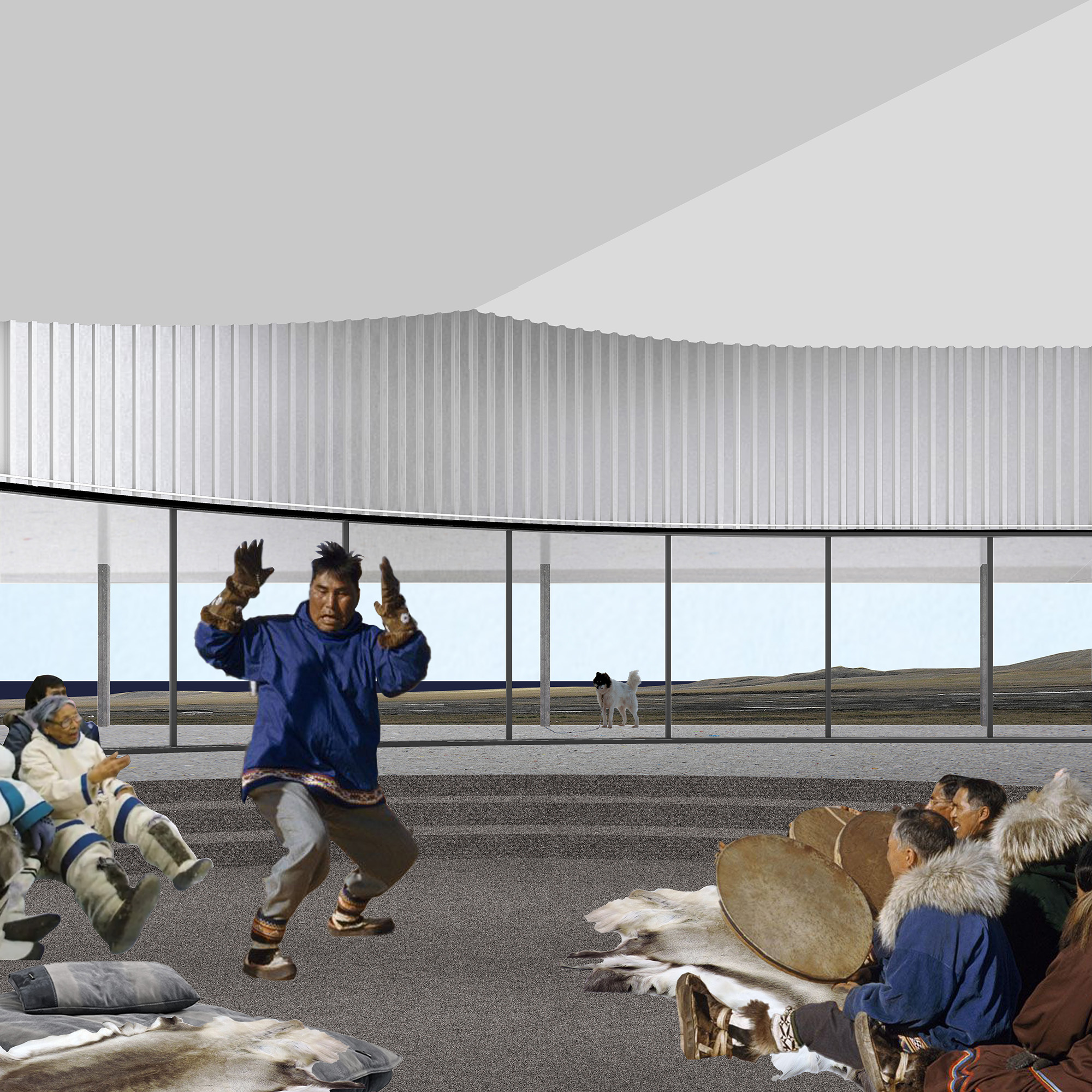




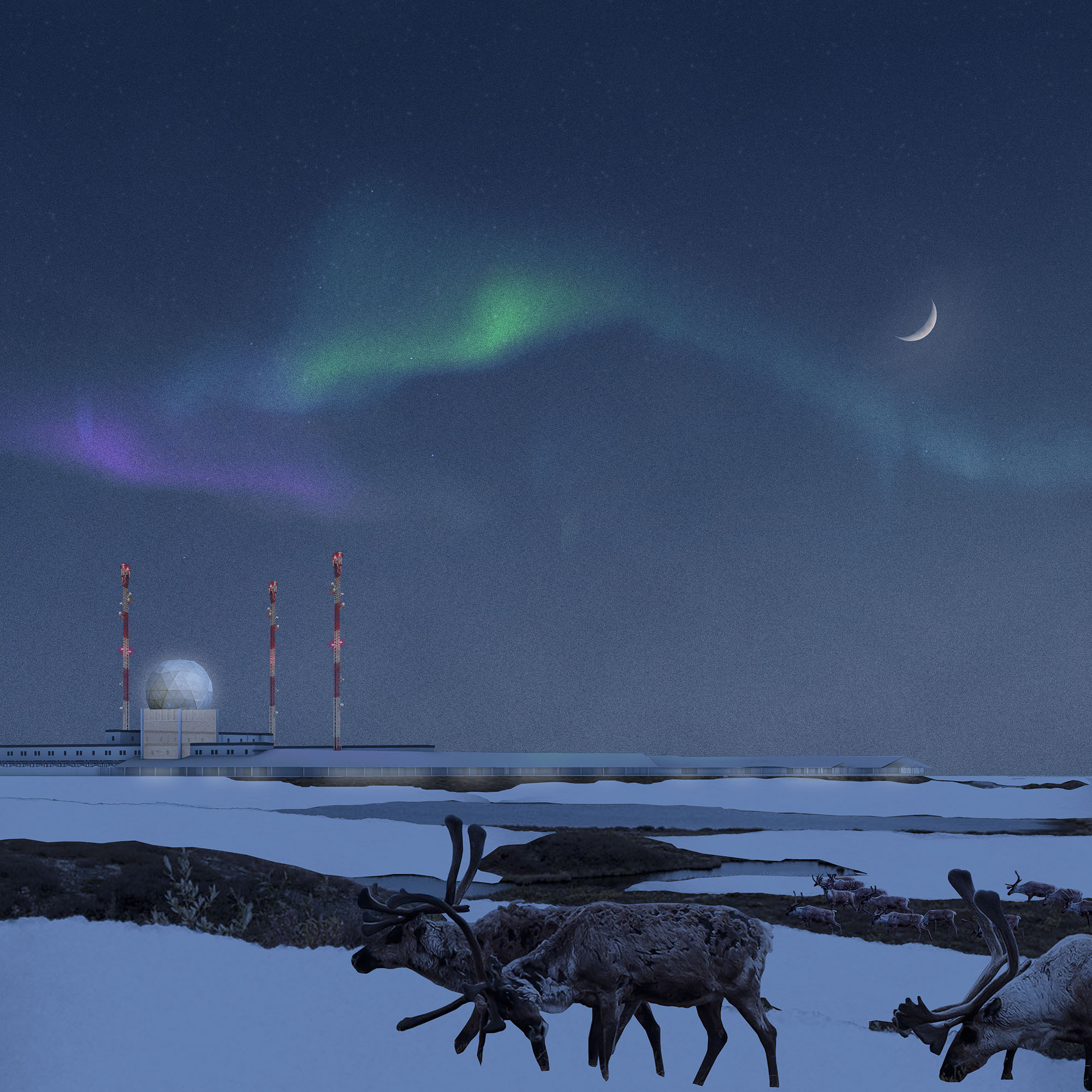
View research on the DEW Line here
© Alek Tomich_ New York, NY